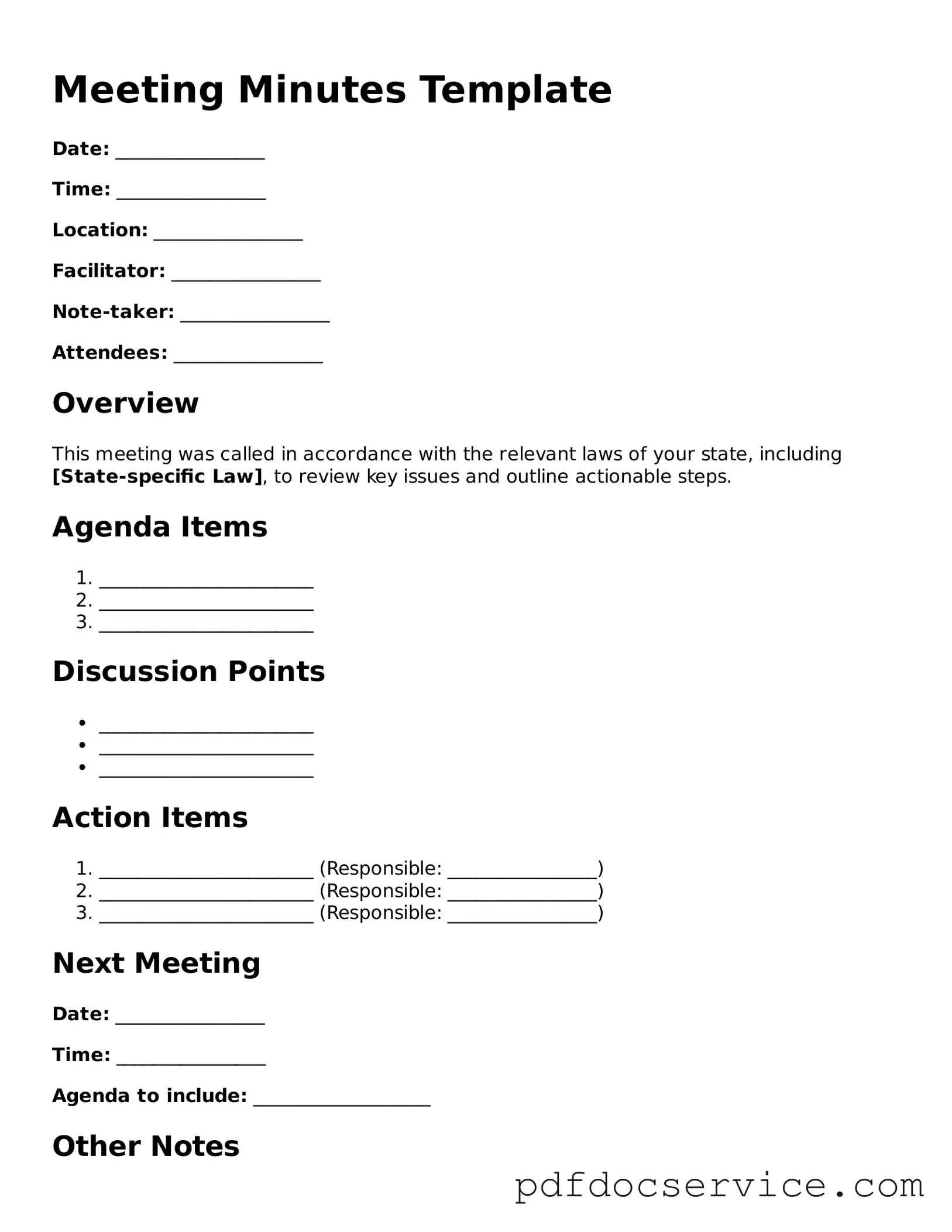The Meeting Minutes form serves as an official record of discussions, decisions, and actions taken during a meeting. This documentation is essential for ensuring accountability and providing a reference for participants and stakeholders who may need to revisit the topics discussed. It helps in tracking progress on action items and serves as a legal record if disputes arise regarding decisions made during the meeting.
The responsibility for completing the Meeting Minutes form typically falls to the designated secretary or note-taker of the meeting. This individual is tasked with accurately capturing the essence of the discussions, decisions made, and any assignments of tasks. However, all participants should feel encouraged to contribute to the accuracy of the minutes by providing feedback or corrections as necessary.
When filling out the Meeting Minutes form, several key elements should be included to ensure completeness and clarity:
-
Date and time:
The specific date and time when the meeting occurred.
-
Participants:
A list of attendees, as well as those who were invited but did not attend.
-
Agenda items:
A summary of the topics discussed, following the order of the agenda.
-
Decisions made:
Clear documentation of any resolutions or decisions reached during the meeting.
-
Action items:
Specific tasks assigned to individuals, including deadlines for completion.
Once the Meeting Minutes form has been completed, it is important to distribute the document to all participants and relevant stakeholders promptly. This can be done via email or through a shared digital platform. Ensuring that everyone receives the minutes helps maintain transparency and allows participants to review the discussions and action items. Additionally, it is advisable to keep a copy of the minutes in a centralized location for future reference.
How long should the Meeting Minutes be kept?
The retention period for Meeting Minutes can vary based on organizational policies and legal requirements. Generally, it is advisable to keep minutes for a minimum of three to five years. However, some organizations may choose to retain them indefinitely, especially if they pertain to significant decisions or projects. Regular reviews of archived minutes can also be beneficial for historical context and continuity in decision-making.
What should be done if there are discrepancies in the Meeting Minutes?
If discrepancies are identified in the Meeting Minutes, it is crucial to address them promptly. Participants should communicate any inaccuracies to the note-taker or the individual responsible for the minutes. A revised version of the minutes can then be circulated, highlighting the corrections made. This process ensures that the official record remains accurate and reflects the true nature of the discussions and decisions made during the meeting.
